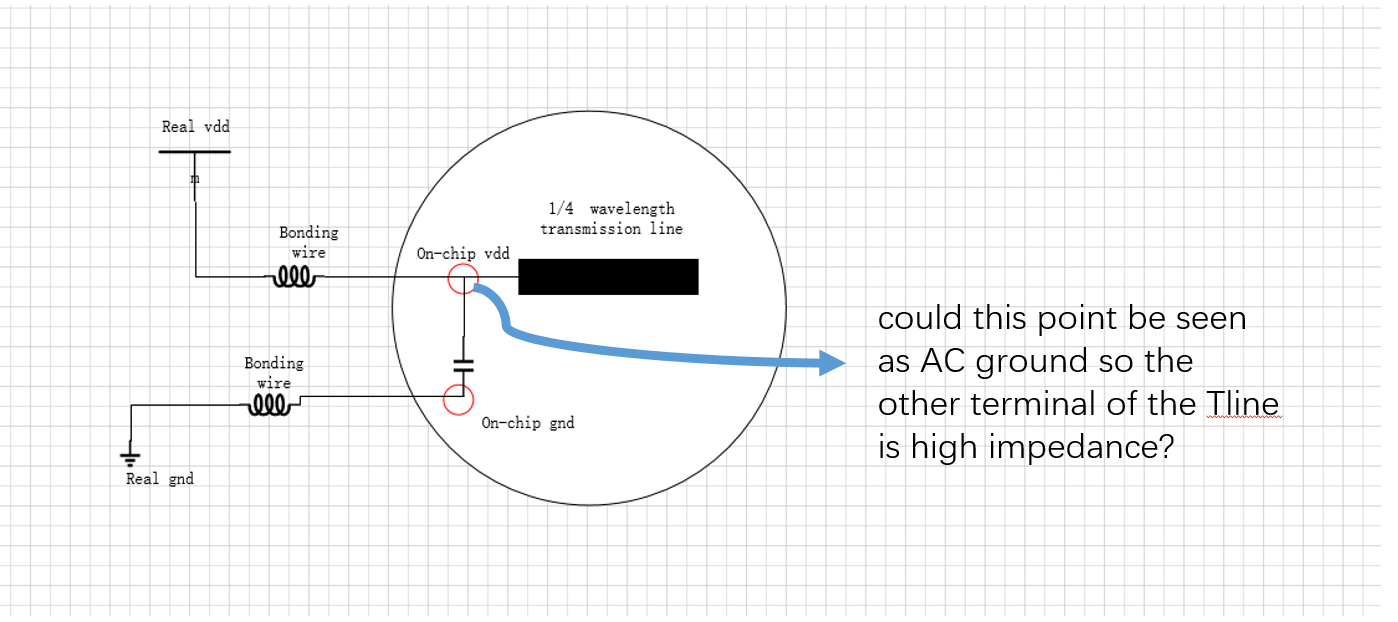What is Real GND in high frequency IC design?
But in high freq. ,the impedance of bonding wire should be taking into account, on-chip gnd is connected to the real gnd through inductor, that is to say on-chip gnd is not real gnd,so the terminal of the transmission line is not truly shorted,it could not actually act as 1/4 wavelength-shorted transmission line...am I right? I'm confused about it for a few days...:(

That Bondwire might be very serious trouble @ 70GHz..If you use a IV Foundry, doesn't it have a Backside VIA ?
Thanks for your kind reply BigBoss,I use TSMC 65nm rf process, I'm not sure if it has Backside VIA...
In RF there is no "real GND", it is always distributed GND, and the circuit design in most cases refers to the local ground at that location. Why does your on-chip oscillator care about the external ground?
If you have a shorted lambda/4 line on chip, the other end of that line will see high impedance. The path to external off-chip ground doesn't change that.
So you mean the inductance introduced by bondwire doesn't change the performance of on-chip device since on-chip device has it's own on-chip ground , could I understand in this way? But we usually say that in high frequency,the bondwire inductance could not be neglect...
In my view, lambda/4 line is actually connected to ground through bondwire inductor which has very high-impedance over 70GHz,so what the other end of the line see is not high impedance but very low impedance,and it completely changes my intention...
I'm looking forward to your kind reply
Yes, that is what I meant.
Electrons don't care what you call ground. It all depends where the actual current flow is.
Sure, but in your system architecture the oscillator is one device (on chip with no bond wires in between) and the signal path from chip to external world is another topic.
Your transmission line signal travels through a signal conductor and a return (ground) conductor. You are correct IF the bond wire is somewhere IN that path. But is that true? I would expect your line (consisting of signal and return conductor) to be completely on chip, so that the bond wire is not part of the transmission line signal path.
